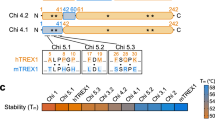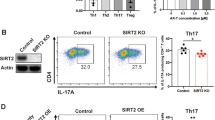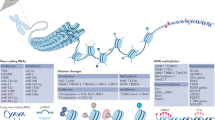Abstract
Systemic lupus erythematosus (SLE) is an autoimmune disease that affects multiple organs, with glomerulonephritis representing a frequent and serious manifestation. SLE is characterized by the presence of various autoantibodies, including anti-DNA antibodies that occur in approximately 70% of patients with SLE and which contribute to disease pathogenesis. Consequently, immunosuppressive therapies are applied in the treatment of SLE to reduce autoantibody levels. However, increasing evidence suggests that DNA—especially double-stranded DNA—constitutes an important pathogenic factor that is able to activate inflammatory responses by itself in autoimmune diseases. Therefore, modifying the structure of DNA to reduce its pathogenicity might be a more targeted approach for the treatment of SLE than immunosuppression. This article presents information in support of this strategy, and discusses the potential methods of DNA structure manipulation—in light of data obtained from mouse models of SLE—including topoisomerase I inhibition, administration of DNase I, or modification of histones using heparin or histone deacetylase inhibitors.
This is a preview of subscription content, access via your institution
Access options
Subscribe to this journal
Receive 12 print issues and online access
$209.00 per year
only $17.42 per issue
Buy this article
- Purchase on Springer Link
- Instant access to full article PDF
Prices may be subject to local taxes which are calculated during checkout



Similar content being viewed by others
References
Casciola-Rosen, L. A., Anhalt, G. & Rosen, A. Autoantigens targeted in systemic lupus erythematosus are clustered in two populations of surface structures on apoptotic keratinocytes. J. Exp. Med. 179, 1317–1330 (1994).
Botto, M. et al. Homozygous C1q deficiency causes glomerulonephritis associated with multiple apoptotic bodies. Nat. Genet. 19, 56–59 (1998).
Zykova, S. N., Seredkina, N., Benjaminsen, J. & Rekvig, O. P. Reduced fragmentation of apoptotic chromatin is associated with nephritis in lupus-prone (NZB × NZW)F(1) mice. Arthritis Rheum. 58, 813–825 (2008).
Wen, Z. K. et al. DNA hypomethylation is crucial for apoptotic DNA to induce systemic lupus erythematosus-like autoimmune disease in SLE-non-susceptible mice. Rheumatology (Oxford) 46, 1796–1803 (2007).
Unanue, E. & Dixon, F. J. Experimental glomerulonephritis. IV. Participation of complement in nephrotoxic nephritis. J. Exp. Med. 119, 965–982 (1964).
Sylvestre, D. L. & Ravetch, J. V. Fc receptors initiate the Arthus reaction: redefining the inflammatory cascade. Science 265, 1095–1098 (1994).
Suzuki, K. et al. Activation of target-tissue immune-recognition molecules by double-stranded polynucleotides. Proc. Natl Acad. Sci. USA 96, 2285–2290 (1999).
Akira, S., Takeda, K. & Kaisho, T. Toll-like receptors: critical proteins linking innate and acquired immunity. Nat. Immunol. 2, 675–680 (2001).
Benigni, A. et al. Involvement of renal tubular Toll-like receptor 9 in the development of tubulointerstitial injury in systemic lupus. Arthritis Rheum. 56, 1569–1578 (2007).
Wu, X. & Peng, S. L. Toll-like receptor 9 signaling protects against murine lupus. Arthritis Rheum. 54, 336–342 (2006).
Stoehr, A. D. et al. TLR9 in peritoneal B-1b cells is essential for production of protective self-reactive IgM to control TH17 cells and severe autoimmunity. J. Immunol. 187, 2953–2965 (2011).
Ishii, K. J. et al. A Toll-like receptor-independent antiviral response induced by double-stranded B-form DNA. Nat. Immunol. 7, 40–48 (2006).
Ishikawa, H., Ma, Z. & Barber, G. N. STING regulates intracellular DNA-mediated, type I interferon-dependent innate immunity. Nature 461, 788–792 (2009).
Takaoka, A. et al. DAI (DLM-1/ZBP1) is a cytosolic DNA sensor and an activator of innate immune response. Nature 448, 501–505 (2007).
Ablasser, A. et al. RIG-I-dependent sensing of poly(dA:dT) through the induction of an RNA polymerase III-transcribed RNA intermediate. Nat. Immunol. 10, 1065–1072 (2009).
Muruve, D. A. et al. The inflammasome recognizes cytosolic microbial and host DNA and triggers an innate immune response. Nature 452, 103–107 (2008).
Roberts, T. L. et al. HIN-200 proteins regulate caspase activation in response to foreign cytoplasmic DNA. Science 323, 1057–1060 (2009).
Decker, P., Singh-Jasuja, H., Haager, S., Kötter, I. & Rammensee, H. G. Nucleosome, the main autoantigen in systemic lupus erythematosus, induces direct dendritic cell activation via a MyD88-independent pathway: consequences on inflammation. J. Immunol. 174, 3326–3334 (2005).
Hägele, H. et al. Double-stranded DNA activates glomerular endothelial cells and enhances albumin permeability via a Toll-like receptor-independent cytosolic DNA recognition pathway. Am. J. Pathol. 175, 1896–1904 (2009).
Allam, R. et al. Viral RNA and DNA trigger common antiviral responses in mesangial cells. J. Am. Soc. Nephrol. 20, 1986–1996 (2009).
Leadbetter, E. A. et al. Chromatin-IgG complexes activate B cells by dual engagement of IgM and Toll-like receptors. Nature 416, 603–607 (2002).
Means, T. K. et al. Human lupus autoantibody-DNA complexes activate DCs through cooperation of CD32 and TLR9. J. Clin. Invest. 115, 407–417 (2005).
Lande, R. et al. Plasmacytoid dendritic cells sense self-DNA coupled with antimicrobial peptide. Nature 449, 564–569 (2007).
Tian, J. et al. Toll-like receptor 9-dependent activation by DNA-containing immune complexes is mediated by HMGB1 and RAGE. Nat. Immunol. 8, 487–496 (2007).
Yanai, H. et al. HMGB proteins function as universal sentinels for nucleic-acid-mediated innate immune responses. Nature 462, 99–103 (2009).
van Bruggen, M. C. et al. Heparin and heparinoids prevent the binding of immune complexes containing nucleosomal antigens to the GBM and delay nephritis in MRL/lpr mice. Kidney Int. 50, 1555–1564 (1996).
Hedberg, A. et al. Heparin exerts a dual effect on murine lupus nephritis by enhancing enzymatic chromatin degradation and preventing chromatin binding in glomerular membranes. Arthritis Rheum. 63, 1065–1075 (2011).
Napirei, M., Ludwig, S., Mezrhab, J., Klöckl, T. & Mannherz, H. G. Murine serum nucleases—contrasting effects of plasmin and heparin on the activities of DNase1 and DNase1-like 3 (DNase1l3). FEBS J. 276, 1059–1073 (2009).
Reilly, C. M. et al. The histone deacetylase inhibitor trichostatin A upregulates regulatory T cells and modulates autoimmunity in NZB/W F1 mice. J. Autoimmun. 31, 123–130 (2008).
Hsiang, Y. H., Lihou, M. G. & Liu, L. F. Arrest of replication forks by drug-stabilized topoisomerase I–DNA cleavable complexes as a mechanism of cell killing by camptothecin. Cancer Res. 49, 5077–5082 (1989).
Hsiang, Y. H., Hertzberg, R., Hecht, S. & Liu, L. F. Camptothecin induces protein-linked DNA breaks via mammalian DNA topoisomerase I. J. Biol. Chem. 260, 14873–14878 (1985).
Frese-Schaper, M., Zbaeren, J., Gugger, M., Monestier, M. & Frese, S. Reversal of established lupus nephritis and prolonged survival of New Zealand black × New Zealand white mice treated with the topoisomerase I inhibitor irinotecan. J. Immunol. 184, 2175–2182 (2010).
Samaha, R. J. & Irvin, W. S. Deoxyribonucleic acid strandedness. Partial characterization of the antigenic regions binding antibodies in lupus erythematosus serum. J. Clin. Invest. 56, 446–457 (1975).
Samejima, K. & Earnshaw, W. C. Trashing the genome: the role of nucleases during apoptosis. Nat. Rev. Mol. Cell Biol. 6, 677–688 (2005).
Campbell, V. W. & Jackson, D. A. The effect of divalent cations on the mode of action of DNase I. The initial reaction products produced from covalently closed circular DNA. J. Biol. Chem. 255, 3726–3735 (1980).
Chitrabamrung, S., Rubin, R. L. & Tan, E. M. Serum deoxyribonuclease I and clinical activity in systemic lupus erythematosus. Rheumatol. Int. 1, 55–60 (1981).
Fenton, K. et al. Anti-dsDNA antibodies promote initiation, and acquired loss of renal Dnase1 promotes progression of lupus nephritis in autoimmune (NZB×NZW)F1 mice. PLoS ONE 4, e8474 (2009).
Macanovic, M. et al. The treatment of systemic lupus erythematosus (SLE) in NZB/W F1 hybrid mice; studies with recombinant murine DNase and with dexamethasone. Clin. Exp. Immunol. 106, 243–252 (1996).
Verthelyi, D., Dybdal, N., Elias, K. A. & Klinman, D. M. DNAse treatment does not improve the survival of lupus prone (NZB × NZW)F1 mice. Lupus 7, 223–230 (1998).
Venkatesh, J. et al. Antigen is required for maturation and activation of pathogenic anti-DNA antibodies and systemic inflammation. J. Immunol. 186, 5304–5312 (2011).
Neubert, K. et al. The proteasome inhibitor bortezomib depletes plasma cells and protects mice with lupus-like disease from nephritis. Nat. Med. 14, 748–755 (2008).
Author information
Authors and Affiliations
Contributions
S. Frese researched the data for the article and wrote the article. B. Diamond contributed to review and/or editing of the manuscript before submission. S. Frese and B. Diamond contributed equally to discussions of the content.
Corresponding author
Ethics declarations
Competing interests
S. Frese has filed a patent with the European Patent Office for the treatment of autoimmune diseases by use of topoisomerase I inhibitors. B. Diamond declares no competing interests.
Rights and permissions
About this article
Cite this article
Frese, S., Diamond, B. Structural modification of DNA—a therapeutic option in SLE?. Nat Rev Rheumatol 7, 733–738 (2011). https://doi.org/10.1038/nrrheum.2011.153
Published:
Issue Date:
DOI: https://doi.org/10.1038/nrrheum.2011.153
This article is cited by
-
Suppression of lupus nephritis and skin lesions in MRL/lpr mice by administration of the topoisomerase I inhibitor irinotecan
Arthritis Research & Therapy (2016)



